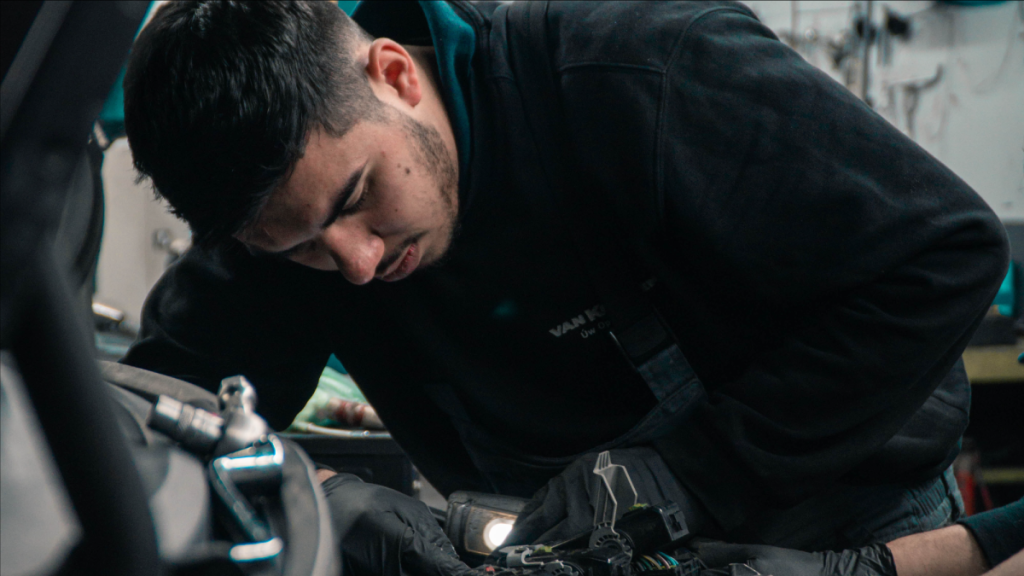Automobiles are a crucial part of our daily lifestyle as they are responsible for our on-going expeditions. Hence, our responsibility is to keep these vehicles running in optimal conditions by ensuring an intact and properly functioning engine at all times. We believe that basic engine knowledge can help you analyze rising issues yourself while implementing the necessary measures at hand without blunders.
However, there’s no need for you to be a mechanic to understand the functioning and parts of your car’s engine. Here’s a simple guide for you to master the language of your car’s engine.
Internal Combustion Engine
The development of the internal combustion engine began in the 16th century. Now, almost every modern vehicle you’ll see is powered by an internal combustion engine. It’s a complete system formed and run by various components.
The workflow and functioning of an internal combustion engine is divided into three (03) parts.
Engine Head
It’s a channel that mainly includes camshafts, spark plugs, and valves from where fuel enters and exhaust gases exit.
Engine Block
The engine block is also known as a cylinder block due to cylinders placed in its structure. Engines are called V6 or V8 as per the numbers of the cylinders installed, and ‘inline’ or ‘flat-four’ refers to their layout or placement. It’s the main block where fuel undergoes combustion to be converted into power in the combustion chamber. Its other key components include pistons and crankshaft.
Oil Sump
The oil sump constitutes an oil pan and an oil filter which are responsible for lubricating the engine.
Parts & Functioning
Cylinder Block
The cylinder block is where the main function occurs, from fuel intake, compression, combustion, and gas exhaust. It is responsible for confining the fuel and directing the pistons. It is engineered with robust components to handle pressure and temperature efficiently.
Cylinder Head
The cylinder head is constituted above the cylinder block consisting of components such as spark plug and valves. Its function is to restrict air and gas from exiting the system.
Crankshafts
The crankshaft converts the up and down motion of the piston into a rotatory motion through a connecting rod, transmitting the power/thrust obtained from the piston to the transmission shaft, which moves your car.
Camshafts
The camshaft is the engine’s brain, which works in harmony with the crankshaft via a timing belt. Its function is to ensure the right time for valves opening and closing.
Spark Plugs
A spark plug is an electrical device used to ignite the air-fuel mixture in the combustion chamber by a spark generated after the compression stroke. When fuel is ignited, it expands and prompts the piston by a thrust for a power stroke to follow. A spark plug requires 12,000 to 25,000 V to spark properly.
Valves
Valves are gates that open when fuel has to enter or gases require an exit. The intake valve allows the fuel to enter, and the exhaust valve is for exhaust gases to leave the chamber. It seals the combustion chamber, preventing any leakage during the process.
Piston
A piston is an essential part of an engine that provides mechanical energy to the system, moving up and down, making strokes with the help of a crankshaft. The resulting rotatory motion provides power to the wheels through transmission and driveshaft.
Combustion Chamber
As the name refers, it’s where fuel combustion occurs and is made to withstand high temperatures.
Oil Sump
As mentioned above, the oil sump consists of an oil pan and the oil filter. The oil pan is an oil storing container whose function is to spray oil through other parts of the engine providing necessary lubrication. The oil filter keeps that oil clean of debris and build-up.
Working – The Four Strokes
Piston Strokes
The modern engine works in four strokes meaning power is generated by a series of four piston strokes, and thus it’s known as a 4-stroke engine. Each stroke is defined as per its function, further explained down below.
- Intake Stroke
The process starts with the piston at its initial top position. The movement begins with the piston following its downward motion sucking the air into the cylinder, with the intake valve opened. At the same time, the fuel injector sprays the required fuel for ignition. - Compression Stroke
When the piston reaches its lowest position, the valves are closed. The upward motion of the piston then performs a compression stroke after the intake stroke and its upward thrust compresses the air-fuel mixture.
- Power/Combustion Stroke
Once the piston is at its topmost position, the spark plug sparks igniting the air-fuel mixture generating usable power for the engine. And then the combustion reaction pushes the piston down again. - Exhaust Strokes
When the piston goes down, the exhaust valve opens up. When it moves up again, it pushes the exhaust gases formed from combustion out of the valve.
We hope you understand the crucial components of your car. Learning the basic functioning and parts of the engine will help you take care of them the right way while keeping an eye on your mechanic whenever you trust another human with your vehicle or come across a hefty bill.

